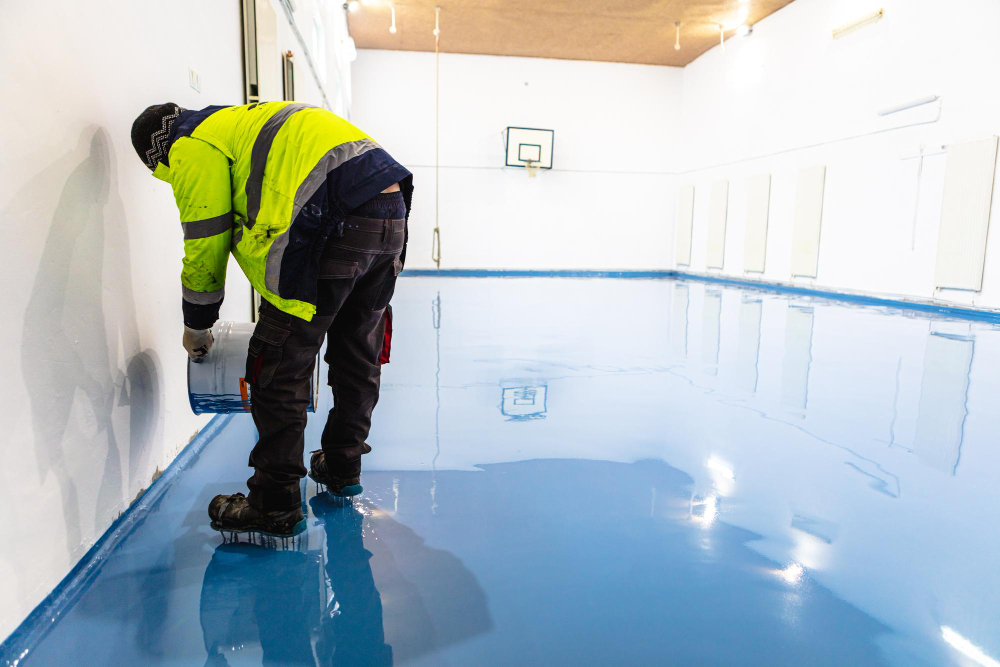
Epoxy resin in the Philippines is a fundamental material across multiple industries, including construction, automotive, and electronics. Its strength, versatility, and ability to be customized to specific needs have made it highly useful. As the country accelerates its industrial growth while emphasizing sustainability, this material’s importance continues to grow.
Now, throughout his article, we’ll get into the reasons behind its popularity in the country. We’ll also go through its different applications, and how it aligns with recent developments.
What Makes Epoxy Resin Unique?
If you’re wondering why this material is quite unique, it’s because epoxy-based resin (also known as polyepoxide), stands as a versatile polymer. It changes into a strong and long-lasting material when combined with a curing agent. Its distinctive qualities, like resistance to chemicals, heat, and wear, make it highly suitable for a wide range of uses. What’s more, it can be customized with additives to meet specific needs, whether it’s for industrial flooring or intricate electronics.
In the Philippines, polyepoxide is commonly used in flooring solutions for spaces like warehouses, kitchens, and even aircraft hangars. This is all due to its durability and seamless finish.
Applications of Epoxy Resin in the Philippines
Construction and Infrastructure
The thriving construction industry in the country has increased the demand for polyepoxide. This is because it is valued for its use in coatings, adhesives, and sealants to strengthen and protect infrastructure. When used as coatings, it shields concrete from wear and environmental damage, while adhesives provide strong bonds for materials like steel and concrete, essential for high-rise buildings and bridges.
On top of this, its gap-filling and water-resistant properties guarantee long-term structural integrity. Major projects like the Metro Manila Subway emphasize on its durability and adaptability. It’s an inexpensive solution for extending the life of infrastructure.
Industrial Flooring
The material is known as well for its shock-absorbing properties. This makes it ideal for warehouses, repair shops, showrooms, and pharmaceutical facilities. The smooth surface resists dust, chemicals, and oils, ensuring cleanliness and safety.
Now in food-related spaces like kitchens or processing plants, its non-porous surface prevents bacterial growth while withstanding cleaning agents. Easy maintenance, chemical resistance, and slip prevention make epoxy flooring a reliable choice for industries prioritizing hygiene and safety.
Electronics
The electronics industry relies heavily on this material for its insulating properties. It protects electronic components from moisture, dust, and heat while ensuring they function reliably in diverse environments. In the Philippines’ growing manufacturing industry, to create high-quality electronic gadgets, this material is needed.
Automotive
In automotive, polyepoxide serves as an adhesive for bonding lightweight materials like composites with metals. This improves vehicle efficiency by reducing weight while maintaining strength. It also resists oils and grease commonly found in automotive environments.
Marine Industry
This material is well-known to be corrosion resistant. This means it can protect boat hulls and other equipment from seawater damage, while extending their lifespan. This application is particularly important in an archipelagic country like the Philippines.
Sustainability: A Growing Concern
Traditional polyepoxides are highly effective but raise significant environmental issues. For this reason, the growing ecological awareness has spurred the development of more sustainable alternatives. Now, there are resins derived from renewable resources or those designed to release fewer volatile organic compounds (VOCs). Although, these eco-friendly options are generally more costly. This is why manufacturers are prioritizing more on solutions that balance high performance with environmental responsibility.
Also, modern resins are now custom-made to reduce emissions during production. They are now finding their way into industries like construction and electronics. This therefore aligns with global sustainability trends while addressing specific regional needs, including those in the Philippines.
Local Market Dynamics
The market for this material in the country is thriving thanks to contributions from both local firms and international companies. These organizations serve a wide range of industries by delivering innovative products that meet global standards.
Competitive Advantages
Local businesses excel at creating solutions custom-made to the unique requirements of the Philippine market. As for international corporations, they leverage advanced technologies to enhance product qualities.
Challenges Facing the Industry
Despite its popularity, the market for polyepoxides still faces challenges:
High Costs of Sustainable Alternatives
Eco-friendly resins are usually more expensive than traditional ones.
Environmental Concerns
Disposal of non-biodegradable materials remains an issue to this day.
Market Competition
The presence of international companies increases competition for local manufacturers. So in order to solve these problems, parties must continue to innovate and work together.
Future Outlook
The outlook for the demand of polyepoxides in the Philippines remains highly optimistic. This is driven by continuous development and industrial expansion. Its applications are expected to grow further, supported by advancements in resin technology, like self-healing and high-temperature-resistant variants, which could lead to new opportunities.
Lastly, government initiatives emphasizing sustainability are likely to increase the demand for environmentally friendly epoxy-based products. As industries in the country modernize and incorporate advanced materials into their processes, epoxy resin is poised to remain a relevant element in the country’s economy.
Key Takeaway
The widespread use of epoxy resin in the Philippines is largely due to its adaptability across multiple industries like construction, automotive, and electronics. Its unique combination of durability and flexibility has made it an integral component for both functional and aesthetic purposes.
Despite the ongoing environmental concerns, the mixture of eco-friendly formulations gives hope for a more sustainable future. As the nation continues to evolve, epoxy-based resin will remain fundamental in shaping industrial development. Thus, improving safety in a variety of settings and providing protection for infrastructure